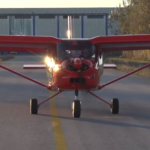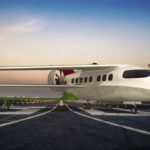Andrew Munday of Atkins answers the chicken and egg question of what comes first in UAM, but admits that “nobody likes the answer.” He also explains why the market will bring a “new dimension” to cities
The question of which flight aspects come first within the urban air market – infrastructure or vehicles – is one that many within the industry are still pondering.
Design, engineering and project management consultancy Atkins has been working on all components of the new urban air mobility market, from smart cities and intelligent mobility to aircraft design and certification. Andrew Munday, Practice Director at Atkins said the new market was exciting for the consultancy as it brought all of these aspects together into one system.
Part of the reality, rather than just concept
“We want to be part of making it a reality, rather than just a concept,” he said.
When asked by WeAreFinn the chicken and egg question of which would come first, the vehicles or the infrastructure, Munday said: “The answer is that both have to come together. You need the vehicle to know what’s going to be interfacing with the infrastructure, but you need the infrastructure to know what the vehicle constraints are.”
He added: “That’s where our expertise across both of those is really important, making sure that when we are designing the vehicle, it’s a concept that’s actually going to work in an urban setting. And when we are designing the urban setting, we are thinking about the vehicle that’s coming in and making sure we are making the provision and we understand how that’s going to work. So really, the answer, which nobody likes, is both together.”
UAM will bring “new dimension” to cities
Munday believes that transport opportunities offered by the urban air mobility market would benefit to most of the urban population and free up space within cities which could be used for ground based transport or other opportunities.
“The exciting thing about urban air mobility is that it is going to open it up to the masses as we reach scale,” he explained. “We are adding a new dimension to our travel, so that’s going to free up more space on the ground which is actually really valuable for us to do other things or to have greater capacity in terms of ground based transport. Urban air mobility adds a new dimension and that’s going to be good news for all of us.”
* Footage shown within this interview contains supporting images of aircraft and infrastructure owned and designed by companies: United Vehicle Robotics, Boeing, Samad Aerospace, Six Miles Across London https://www.sixmilesacrosslondon.com/urban-air-mobility and ARUP https://www.arup.com/expertise/industry/aviation

